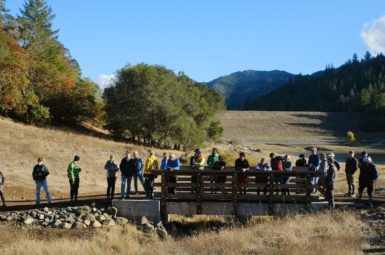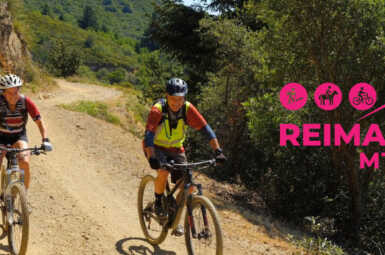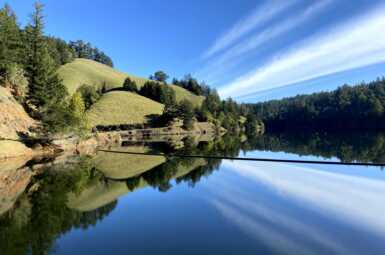November 2022 Election 2022 MMWD Board of Directors Candidate Questionnaire
As a 501(c)3 nonprofit organization, Marin County Bicycle Coalition cannot endorse candidates for public office, but we are able to share information so that you can arrive at your own conclusion. Below are Marin Municipal Water District candidates’ responses to our questionnaire on bicycling in Marin. We have made no content changes. Thanks to the candidates for their time and thoughtful answers.
Candidates’ campaign websites may be accessed by clicking on those with a highlighted name. Those who did not provide a campaign website are not highlighted.
Division BouNdaries and Incumbents
Here are the candidates on the November ballot for Marin Muncipal Water District Board of Directors:
Division I – Jack Gibson
Includes Sleepy Hollow, northwest portion of San Anselmo, Terra Linda, Santa Venetia, Marinwood, Lucas Valley, and portions of San Rafael near Highway 101 in the Lincoln Avenue and Dominican areas. Jack is running, Matt Samson is challenging.
Division III – Larry Bragman
Includes San Geronimo Valley, incorporated Fairfax plus unincorporated Fairfax neighborhoods, portion of San Anselmo not including north west area, Ross, Greenbrae, Kentfield, Kent Woodlands, and portion of Larkspur north of Corte Madera Creek and west of Highway 101, portion of Larkspur south of Corte Madera Creek and west of Bon Air Road and west of Skylark Road, watershed land lying north of Fairfax-Bolinas Road or contiguous with towns in Division III and up to Division IV boundary. Larry is running, Ranjiv Khush and Jack Kenney are challenging.
-
Jack Kenney – Did not respond to our questionnaire
Division IV – Cynthia Kohler
Includes incorporated Mill Valley and all surrounding unincorporated neighborhoods west of Highway 101, the area east of Highway 101 and north of Tiburon Boulevard and west of Tiburon and south of Corte Madera, Sausalito, Marin City, Muir Woods, north and south slopes of Mt. Tamalpais, watershed land south of Fairfax-Bolinas Road and up to Division III boundary, and Fort Baker, Barry, and Cronkhite and portions of Golden Gate National Recreation Area lands within the district’s service area. Cynthia is not running, Jed Smith and Shana Katzman are running for the open seat.
-
Shana Katzman – Did not respond to our questionnaire
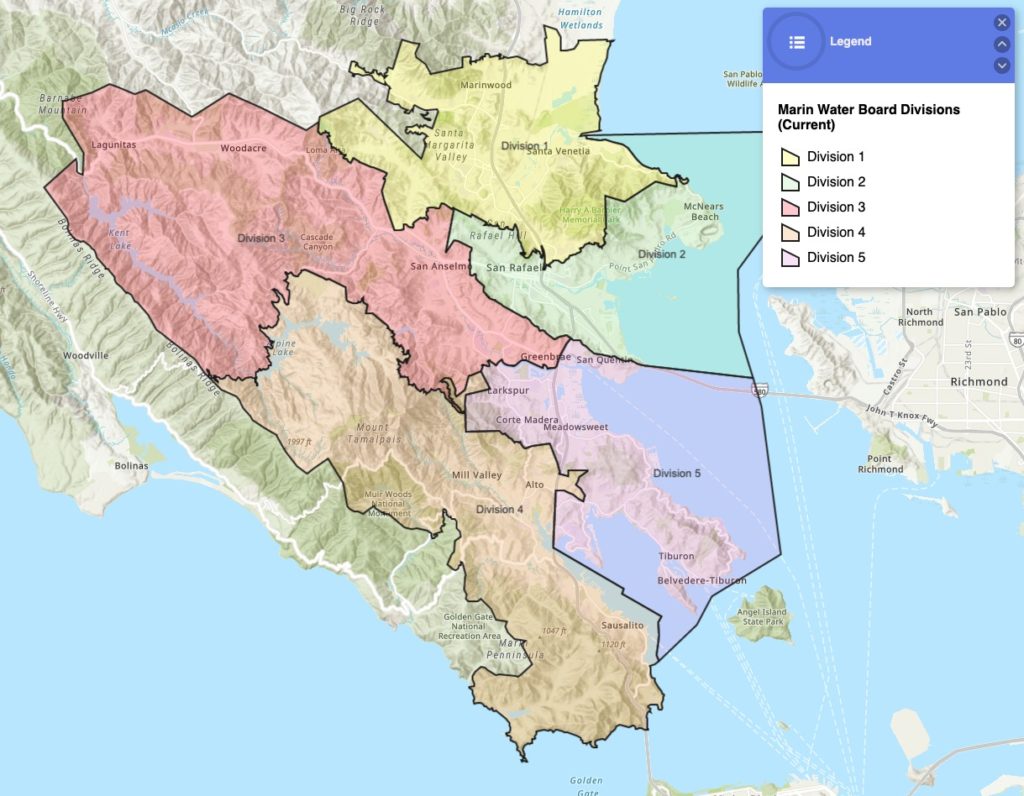
Marin Municipal Water Board Divisions
Do you ride a bicycle? If so, for what purposes and how often? (transportation/road/mtb)
Division I
Jack Gibson:
-
a. Road/recreational:
-
b. Mountain biking:
-
c. Commute:
-
d. Local errands:
No.
Matt Samson:
-
a. Road/recreational: Yes 2-3
-
b. Mountain biking: Yes 2-3
-
c. Commute: No
-
d. Local errands: Yes 1
Division III
Larry Bragman: 2-4 days per week
-
a. Road/recreational:
-
b. Mountain biking: Yes
-
c. Commute: Yes
-
d. Local errands: Yes
Jack Kenney: No response
Ranjiv Khush:
-
a. Road/recreational: 0-1 days/week
-
b. Mountain biking: 2-3 days/week
-
c. Commute: never
-
d. Local errands: 2-3 days/week
Division IV
Shana Katzman: No response
Jed Smith:
-
a. Road/recreational: 0-1
-
b. Mountain biking: 1+
-
c. Commute:
-
d. Local errands: 4+
People on bikes currently have access to watershed fire roads, but all access to singletrack trails is prohibited. Do you support providing some trail experiences for people on bikes, assuming environmental impacts and user conflicts are addressed? (Yes/No/Comments)
Division I
Jack Gibson:
Would consider it, but totally dependent on the specific location, and site specific environmental impact studied. Also, possibly considering the specific trail being limited to access for bikes only, ie no hiking or equestrians on that trail.
Matt Samson:
Yes – I do.
If environmental impacts and user conflicts are addressed, including mitigating safety concerns and risks, reasonably equitable access is not only fair, but also inclusive. This is not going to apply to all singletrack trails. It simply is not realistic. When one user group is exchanged for another, we are simply trading one challenge for another, not making progress or doing the right thing.
Division III
Larry Bragman:
It is currently being evaluated in our Recreational Plan Process and I’m prohibited by the Brown Act from “pre-committing” to a decision before the public process is completed. That being said, I thought the comments of Marin County Open Space’s John Campo in a 8/27/22 Marin IJ story were instructive: “…we have seen a dramatic decline in illegal trail construction, mostly because I think we have this pathway for the community to engage with our planning staff, to prioritize more potential trail projects…”
Jack Kenney: No response
Ranjiv Khush:
Yes.
Proper construction and maintenance of trails can mitigate the environmental impacts of bicycles. Furthermore, bicycle speeds on narrow trails are generally much lower than on open fire roads, which reduces the potential for user conflicts and accidents.
Division IV
Shana Katzman: No response
Jed Smith:
Yes.
The key to your questions is to address the “impacts and conflicts.” All decisions should be made with MMWD’s mission as a guide: 1. To provide clean, safe water to ~200,000 people; 2. To maintain/preserve/enhance our spectacular watershed/ecosystem/habitat; 3. To mitigate the risk of fire damage (potentially catastrophic fire) as much as possible; 4. To be fiscally responsible in our decision-making.
In the first month of my term, I would like to sit down with the leaders of the bike coalition/s and the staff, and all interested parties to review ideas, trails, signage, enforcement, safety, etc. I would like the coalition/s to come with specific requests in order, from most-easily-achieved to dream scenarios, and most importantly solutions. Not everyone will be thrilled about every solution, but compromise needs to happen, the stakes in the ground need to be lifted and solutions agreed upon.
Do you support the allowance of Class I pedal assist e-bikes on watershed fire roads? (Class 1: e-Bikes that are pedal-assist only, with no throttle, and have a maximum assisted speed of 20 mph.) (yes/No/Comments)
Division I
Jack Gibson:
Depending on legal restrictions, and only watershed fire roads
Matt Samson:
If we can find a means for those with access and functional needs to enjoy watershed lands, safely and in concert with all other user groups, we should test or pilot those means for true impact. If the impact is negligent, they should be considered as excluding someone from recreational access because of a physical limitation is not a policy I would move forward as a board member. E-bikes might very well be one of the means but we need to better understand their impacts.
Division III
Larry Bragman:
It is currently being evaluated in our Recreational Plan Process and I’m prohibited by the Brown Act from “pre-committing” to a decision before the public process is completed. I have previously publicly supported and advocated for the admission of Class 1 E bikes for seniors and ADA eligible riders.
Jack Kenney: No response
Ranjiv Khush:
Yes.
Excluding school bicycle teams, my observations suggest that up to 25% of the bicycles on watershed fire roads are now e-bikes, despite the current e-bike prohibition. I have not noted any negative consequences. Clearly this is a situation where MMWD’s policies need to “catch-up” with actual practices.
Division IV
Shana Katzman: No response
Jed Smith:
Please see the first paragraph of my answer above. The lens for solutions should flow to eBikes. Ebikes provide access to a whole new sector of our population; thus I see this as a social equity issue as well. They are also potentially dangerous and destructive. A balanced solution must be derived. Given the historic increased use of the watershed during the pandemic, and the advent of new eBike technology, a new plan must be devised, agreed upon and enforced (by bikers as much as rangers).
What’s your vision for the future of access and recreational opportunities on the Mt. Tam Watershed? What are some of the challenges facing MMWD, and how would you go about fixing them?
Division I
Jack Gibson:
In the election of 1912 the public approved the creation of the MMWD, and the specific proposal approved by the voters was for “public water” and “a park.” The legal comment included the park, ie recreational use of various kinds. But the variety of use has varied over the years. Prior to the 1940s the approved recreation included public boating on the lakes (our water supply). Early in the 1940s board of directors reversed the policy of allowing boating on the lakes. Thus, the “Park” definition is fluid and can mean a wide variety of recreational use. Is it a “Park” without horses, or without bicycles?
My fear for our watershed is not specific to any kind of recreational, but rather to general overuse by all groups. My concern is not too many bikes, it’s too many people. I think the district needs to focus its recreational attention not to controlling which groups can use what area, but rather how to focus on the general overuse, and to be able to manage all of the various activities in an equitable manner, without overstressing the watershed.
Matt Samson:
As someone who has utilized the MMWD watershed for recreation beginning in the early 1990’s, I am a firm believer that responsible use will increase the community’s awareness of how vital the lands are to our water supply and environment. Continuing to educate the public, and watershed users, on our water system will result in more land stewards who will engage in water district processes. This will strengthen the district’s ability to meet its primary mission of providing safe and reliable drinking water. Recreation and water delivery are closely connected.
Maintaining recreational access on the MMWD watershed is imperative as land stewardship requires constant education for the next generation and new community members moving to the area. To ensure this is successful, the district must be open to evolving its recreation policy and address how all of today’s users would like to access watershed lands. The current watershed recreational plan is under review and presents a unique opportunity to address concerns, provide findings on use impacts, and identify solutions that will allow for more equitable access by the public who all want the same thing: responsible access to public lands.
We rely on science and research to make decisions on water and the environment, we should be doing the same on recreational access. This includes impacts from all users on all trail types. Any new change should be predicated by a pilot study and be informed by other agencies who have successfully evolved their recreational use policy to be as inclusive as possible. A plan that is not equitable and inclusive will drive irresponsible use, not solving any of the issues faced currently.
Division III
Larry Bragman:
I think our policies will need to evolve to meet the evolving needs and expectations of the public that we serve. That includes bike riders, hikers, trail runners, dog owners and equestrians.
While our priority must be to preserve and protect the Mt. Tam/Lagunitas Creek watershed as a source of pure water and a living habitat, Marin Water’s founders also envisioned it as a haven for recreation and health. While bicycle access has historically been a part of that mix, bicycle use has greatly increased with the development of mountain bikes and more recently gravel and e-bikes.
While I remain a devoted “acoustic rider”, I have witnessed the increased presence of e-bikes in the watershed. I have also seen their market growth over the last several years in the most “hardcore” bike shops. E-bikes are here to stay and do serve an increasing percentage of riders. Hence, I do think that we will need to find a way to accommodate this technology while regulating its use.
If we are to ever permit Class I e-bikes, I believe it will require a registration program to enforce that restriction. I regularly see Class II and Class III e-bikes in the watershed and believe that they should remain on paved roads. I believe that we should consider whether local bike shops could be delegated to inspect and tag class 1 bikes with a Marin Water permit so that watershed staff can identify permitted uses.
I also think we need to consider expanding bicycle access to approved/regulated single track access. This will require completion of our Recreation Plan which gathers up data on environmental and social impacts. While I do not believe that anecdotal evidence should guide us, it is part of the data that we need to consider. Social factors such as access for children and seniors also need to be considered. These intangible factors, however, should not prevent us from exploring single track and other expanded access opportunities. Ultimately, I think the process will need to provide some gains for each of the stakeholder groups to come to a resolution. I have a pedal in one camp and a foot in the other and do believe that we can come together as a community to accomplish this type of recreational equity.
Jack Kenney: No response
Ranjiv Khush:
The pandemic lockdown period provided an important reminder of how critical access to nature and the outdoors is for social wellbeing: use of public lands and parks, including the Mt. Tam Watershed, increased substantially during this period. Interest in biking also grew, bringing greater numbers of tourists to Marin County. Though recreational tourism includes economic benefits for local businesses, the larger numbers of mountain bikes and e-bikes are straining the abilities of MMWD to enforce compliance with current bike access policies.
As a result, it is essential to consider new strategies for supporting increased recreational demands on the watershed while also ensuring preservation of the ecosystem and water resources. Fortunately, the on-going Watershed Recreation Plan development is an opportunity to advance these new strategies. If elected to the Water Board, I will ensure a vision for managing the Mt. Tam Watershed that aligns bike access with both environmental priorities and other recreational uses.
Division IV
Shana Katzman: No response
Jed Smith:
For the first part of your question –I believe in the original vision for MMWD’s land: to recognize the importance of recreation by giving ~2 million people per year the opportunity to use and enjoy this spectacular place. Unfortunately, all sides of recreation use have too many stakes in the ground and the ire and vitriol that has resulted have not been productive. We should be able to answer dissenting questions with data and reality, and make compromises such that all sides feel like they came out of this with more than when they started.
For the second part – 1. Ensure that we have the infrastructure and supply to deliver safe, healthy, and affordable drinking water to our community. 2. Preserve, maintain, and enhance the watershed and lands. 3. Protect, as best we can, against the risk of catastrophic fire. 4. Build a financial model that is resilient and not bleeding, that considers the impact of climate change and incessant drought.
What’s your vision for addressing equity of access to the Mt. Tam watershed, specifically for racially, ethnically, and economically underrepresented visitors?
Division I
Jack Gibson:
It is largely an issue of information distribution and getting the word to those communities. I am involved with the Marin Hispanic community in many ways. I am the attorney for the Marin Multicultural Center, and I have involved these communities in a number of watershed conferences and events. In that capacity I have invited speakers at such events who are members of that community. It is largely a matter of getting that information into the community.
Matt Samson:
As a society, we have made great strides in prioritizing inclusion over the past few years. This progress should now include greater access to public lands, specifically the MMWD watershed. To increase use, in an equitable way, education and outreach should be increased and targeted at groups that have not traditionally visited the watershed. We must be open to new forms of access if we want to truly be inclusive and allow all groups to share similar experiences on district lands.
Addressing equity will bring a positive experience through increased use of the watershed. When underrepresented groups are provided an opportunity to enjoy what so many currently do, the current use dynamic will shift and the benefit of a more diverse population enjoying MMWD lands will be realized immediately. This should consider new means to access lands to better facilitate new users, including trailhead access, enhanced public transportation, multi-lingual signage and literature, and embracing technology for those with physical limitations.
Division III
Larry Bragman:
Our board has directed staff to include Spanish and other languages on trail signs. This is just beginning to be implemented but it needs to be a priority so that all communities are welcomed in languages that include them.
I don’t believe that we should charge fees or require registration of riders. On the other hand, I do believe that we may need to delegate authority to bike shop professionals to inspect and tag e-bikes if we are to restrict access to Class 1 bikes. Hence, we would be registering bikes not people to avoid alienating communities that have been historically profiled and targeted for enforcement. Now that Covid has hopefully abated, I look forward to a reinvigorated Marin Water community outreach program to the schools to encourage local youth from these communities to expand their horizons by exploring the watershed to further understand its connection and benefit to our community’s health and vitality. The watershed is a living classroom that can provide common ground for all communities to share and revere.
Our local bike community and organizations should also ideally provide a portal of opportunity for these racially, ethnically, and economically underrepresented communities. Biking is literally one of the most efficient means to explore the watershed and open the imaginations of possibility for these communities. It is incredibly important for our youth to develop a greater awareness of the importance of preserving our environment. Ideally, Marin Water’s approach should help facilitate the bike community to encourage social justice and environmental work.
Jack Kenney: No response
Ranjiv Khush:
To ensure that all County residents experience and benefit from the natural beauty of the Mt. Tam Watershed, it will be important to provide better education regarding the Watershed through multiple venues that include:
-
Guided field-trips for schools that serve neighborhoods with higher populations of under-represented visitors.
-
Outreach through community-based organizations that includes bi-lingual information sheets and presentations.
Division IV
Shana Katzman: No response
Jed Smith:
My vision is to provide increasing access via education programs, internships, and jobs. All of the corporations and not-for-profit organizations that I have been associated with measure and report on equity and inclusion metrics and outcomes.
Why should people who ride bikes vote for you?
Division I
Jack Gibson:
Because they care about the watershed, the effective management of the Water District, and the security of our water supply. And, because I also care about those issues, and I am a leader on all of those issues. My experience on the District’s watershed committee, and as chair of the NorthBay Watershed Association for a number of years gives me the experience and knowledge to deal with and manage our watershed.
Matt Samson:
Biking is part of this county’s core, be it mountain, road, or gravel. I have been riding bikes throughout watershed lands for over 30 years and have experienced this resource’s benefit while also considering how access can evolve. The majority of my saddle time is spent on a mountain bike, respectful of all users and constantly thinking about what the future in our hills could look like. My wife and I have instilled the love of biking with our two young girls and now try and bike everywhere possible as a family. This included utilizing MCBC’s valet bike parking at the Marin County Fair!
For our county’s lands to remain sustainable, we must make educated decisions when allowing for new user types or for new trail use. Taking action and not understanding environmental impacts is an irresponsible way to steward our lands. Exclusion of user groups based on economic, social, or physical limitations is an irresponsible way to govern our lands. As our communities change, government and regulation must keep up. This is applicable to user groups throughout the MMWD. Continued struggle against publicly supported change never is as productive as well discussed potential alternative solutions. Sustainable progress is a product of agreed upon solutions that will not damage what we fortunate to enjoy currently.
As a board director, it will be my primary responsibility to ensure the MMWD is able to meet its mission and continue providing the highest quality of water to its customers. This is done in parallel to maintaining a healthy watershed. As that mission continues to be met, focus can shift to implementing a modern recreational use master plan that is inclusive and fair, responsibly managing publicly accessible lands for all that can safely and respectfully use them. Implementation will take time and change should not occur overnight. Sustainable solutions are a byproduct of well thought out decision making processes. There is no benefit to focus on decisions that are detrimental to the current environment as losing what we have serves no purpose to any user. That being said, the time is now to make meaningful, long lasting, and just incremental changes in watershed access and use.
Division III
Larry Bragman:
Mountain biking has been one of the best things I’ve done in my life. It has been a life changing and emotionally satisfying experience. I think it’s time for there to be greater awareness of its benefits. I guess what I’m saying is that my life experience permits me to deliver fairness and thoughtfulness to this process which ultimately can help reduce conflicts and make improvements for all stakeholders.
Jack Kenney: No response
Ranjiv Khush:
Better access to on- and off-road riding opportunities was one of the main reasons behind our family’s move to Marin in 2008. The importance of biking in our lives has only grown with our daughter’s interest in mountain bike riding and racing. Bikes are integral to my family’s quality of life, and I am committed to promoting bicycling as one of the optimum ways to live well and live sustainably.
Division IV
Shana Katzman: No response
Jed Smith:
Because I am someone who knows how to lead and guide large organizations. I am someone who listens and is deeply analytical and decisive. I have been a road biker for decades and shifted to mountain biking in the last 18 years since I moved to this spectacular county from San Francisco. I understand the joy, risks, and opportunities that bikes have given so many people.
Mountain biking was created on our Mt. Tam. Long live biking in Marin County!
members make it happen!
We’re fighting for a more bike-friendly future in Marin. Are you with us? Join Marin County Bicycle Coalition today.
